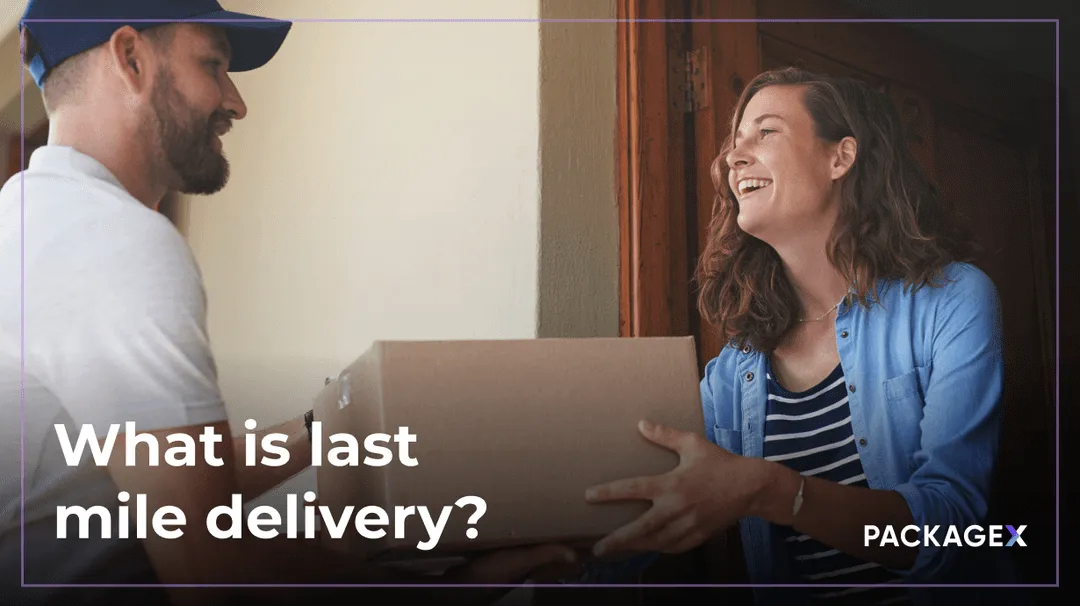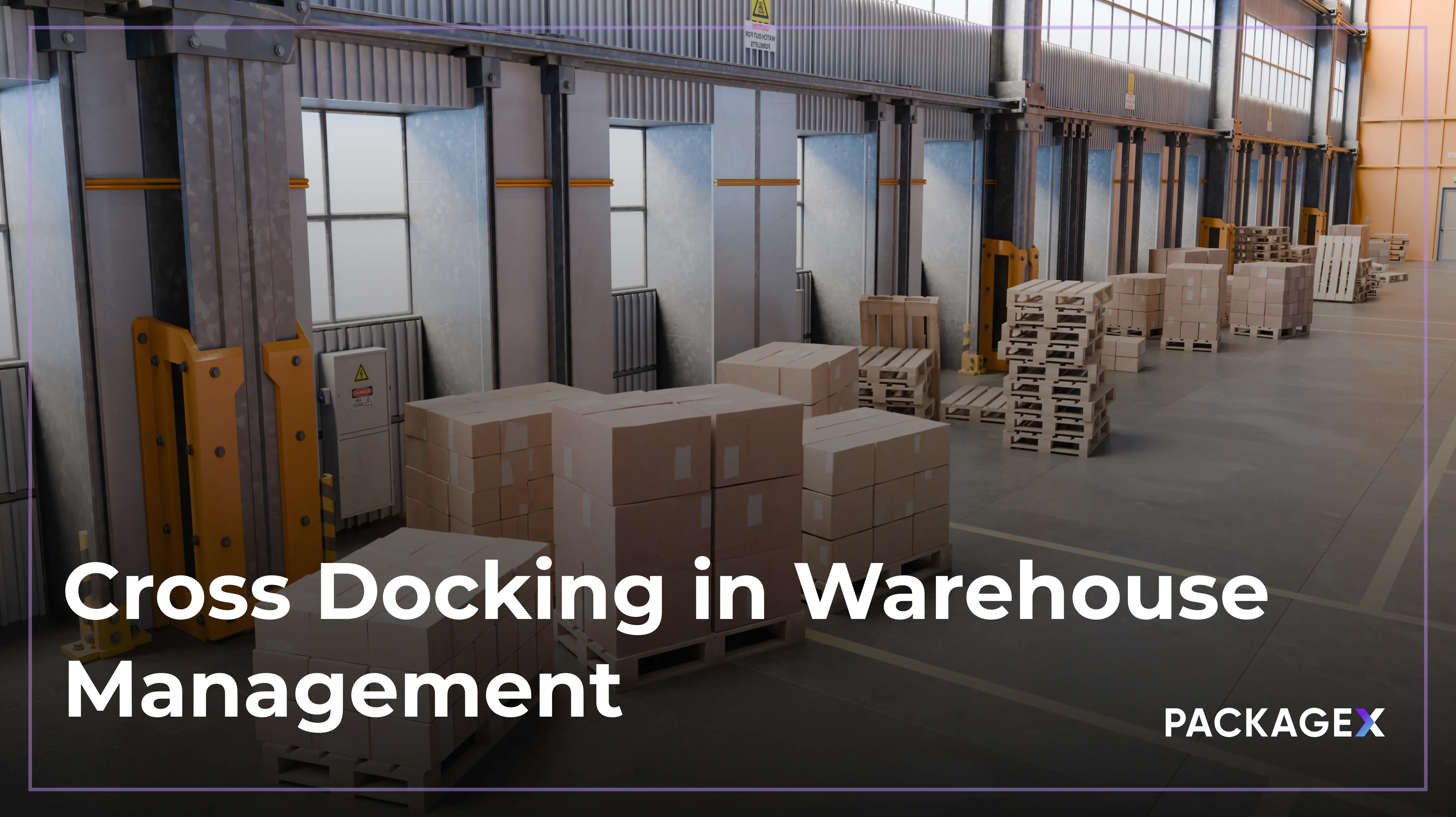Did You Know?
The global last-mile delivery market is projected to reach $200.42 billion by 2027, up from $140.48 billion in 2023.
This final stage in the delivery process, moving goods from a distribution hub to the customer’s doorstep, is often the most expensive and time-consuming part of logistics.
With more consumers expecting same-day or next-day shipping, last-mile delivery in supply chain operations has become a top priority for businesses. Delays, failed deliveries, and high costs impact both retailers and logistics providers, making it crucial to streamline this process. Companies that improve last-mile delivery service can reduce costs, increase efficiency, and enhance customer satisfaction.
New technologies, such as AI-driven route planning and real-time tracking, are helping last-mile delivery companies address these challenges. As e-commerce continues to expand, businesses must find ways to optimize their delivery networks to keep up with demand and maintain a competitive edge.
What Is Last Mile Delivery?
Last-mile delivery is the final and most critical stage of the shipping process, where products are transported from a warehouse or distribution center directly to the end customer’s doorstep, business address, or pickup location (like a parcel locker). This phase bridges the gap between brands and consumers, ensuring the timely delivery of e-commerce purchases, retail orders, groceries, medical supplies, and other essentials.
Key Characteristics of Last-Mile Delivery
- Route Planning Efficiency
Advanced route optimization ensures faster, fuel-efficient deliveries. AI-driven planning tools reduce delays by adapting to traffic patterns, delivery time windows, and real-time conditions. - Real-Time Tracking
Real-time package visibility builds trust and enhances the customer experience. With inbound package tracking, businesses can monitor and manage deliveries from the moment packages enter the facility. - Proof of Delivery (POD)
Contactless proof of delivery with photos, e-signatures, and timestamps ensures accountability and helps reduce disputes or failed delivery claims. - Ease of Integration
Modern last-mile logistics relies on platforms that integrate easily with existing systems. PackageX supports seamless API and SDK integrations, allowing businesses to unify delivery data, automate workflows, and scale operations without disruption. - Smart Tracking with Data Insights
Beyond basic tracking, PackageX offers smart tracking with built-in analytics. Businesses can audit delivery performance, monitor exceptions, and optimize routes using real-time and historical data.
What is Last Mile Delivery in Logistics?
In supply chain management, last-mile delivery refers to the final step where goods are transported from a distribution center to the customer's doorstep. A package can travel thousands of miles efficiently, but if the last stretch isn't handled properly, delivery times suffer, costs increase, and customer satisfaction drops. This is why last-mile delivery in logistics has become a top priority for businesses.
Speed and accuracy matter here more than anywhere else. A delay at this point can impact customer satisfaction, which is why inventory tracking has become a standard feature. Real-time updates let both businesses and buyers know exactly where a package is and when it will arrive.
To keep things efficient, many companies use last-mile delivery station hubs, such as local facilities, where shipments are sorted before they head to customers. This reduces travel time and helps drivers complete more deliveries in a day.
For a simple last-mile delivery example, think of an online order for a smartphone. Once it reaches a nearby sorting center, it is assigned to a driver who delivers it to the buyer’s home.
This final step may cover just a few miles, but it accounts for over 50% of the total shipping costs. Optimizing this process is a top priority for businesses aiming to reduce expenses while keeping customers happy.
By focusing on these strategies, businesses can effectively address the challenges inherent in last-mile delivery, leading to improved service levels and reduced operational costs.
Challenges in Last Mile Delivery
Getting a package to its final stop might seem simple, but businesses face several roadblocks that drive up costs and slow down deliveries. These challenges impact both companies and customers, making last-mile delivery one of the most expensive and unpredictable parts of the supply chain.
1. Rising Costs
Last-mile delivery ranks among the most expensive stages of fulfillment, largely driven by fuel costs, driver wages, and inefficient routing. Businesses looking to stay competitive need smarter solutions to bring down these expenses without sacrificing service quality.
2. Speed and Transparency
Online shoppers now want same-day or next-day deliveries, along with real-time last-mile delivery tracking. Any delays or lack of visibility can lead to frustration, canceled orders, or negative reviews, putting pressure on businesses to optimize their logistics.
3. Congestion Slows Everything Down
Urban areas are packed with vehicles, making it tough for delivery drivers to reach their destinations quickly. Without efficient last-mile delivery route optimization, companies struggle with delays, wasted fuel, and missed time windows.
4. Failed Deliveries
Missed pick-ups, drop-offs, and returned shipments increase costs for retailers and logistics providers. As per industry reports, failed deliveries can add an extra 20% to operational expenses, forcing businesses to rethink their delivery strategies.
5. Scaling Up Isn’t Always Easy
Growing delivery operations come with their own set of challenges. Last-mile delivery companies often struggle with workforce shortages, unpredictable demand, and the need for better technology to manage expanding networks.
To stay ahead, businesses must rethink their approach and adopt smarter logistics solutions that address these challenges head-on.
How AI is Transforming Last Mile Delivery?
Technology is pushing last-mile delivery forward, making it faster, more reliable, and cost-effective. Companies are turning to AI automation and advanced software to stay ahead of growing consumer expectations.
1. AI & Machine Learning:
Artificial intelligence is making deliveries faster and more precisely. Predictive analytics help estimate delivery times based on real-time traffic, weather, and package volume.
Machine learning models improve route efficiency, cutting down miles traveled and fuel consumption. AI-driven demand forecasting also helps in inventory management, reducing delays caused by stock shortages.
2. Last Mile Delivery Software:
The right last-mile delivery software does more than track packages. Advanced management solutions assign deliveries to the best drivers, optimize routes, and provide real-time updates to customers.
A well-integrated last-mile delivery platform reduces delays, prevents missed deliveries, and lowers operational costs. Companies using automated dispatching and live tracking observe a 20% improvement in on-time deliveries.
3. Drones and Autonomous Vehicles:
Self-driving vans and drones are being tested for last-mile delivery service in urban and rural areas. These solutions cut labor costs and reduce carbon emissions. Amazon’s drone delivery program aims to deliver small packages within 30 minutes, while major logistics companies are piloting autonomous delivery bots to handle short-distance drops.
4. Last Mile Delivery Apps:
A last-mile delivery app streamlines coordination between drivers, warehouses, and customers. Real-time tracking, digital proof of delivery, and automated status updates improve transparency. Drivers using app-based navigation tools complete comparatively more deliveries per shift compared to those relying on traditional methods.
With smarter systems in place, last-mile logistics is moving toward faster, greener, and more reliable deliveries.
Strategies for Optimizing Last Mile Delivery
Getting packages to their final stop quickly and cost-effectively has never been more important. According to industry insights, final-mile operations absorb a significant share of logistics spend, making them a key focus for cost-saving strategies
Businesses need practical solutions to keep operations running smoothly, so a mix of advanced technology and strategic partnerships can help tackle common bottlenecks while improving customer satisfaction.
1. AI-Powered Software for Smoother Operations
AI-driven last-mile delivery solutions are changing how companies handle deliveries. Automated dispatching assigns orders to drivers based on real-time traffic and delivery windows. McKinsey & Company reports that AI-powered route optimization can reduce fuel consumption by 10–15%, lowering both costs and carbon footprints.
Features like electronic proof of delivery and dynamic rerouting improve efficiency while cutting delays. Businesses using AI-driven delivery tools see up to 35% fewer delays, according to a 2023 Forbes article on logistics automation.
2. Live Tracking for Better Transparency
Consumers expect accurate updates on their orders, yet 69% of customers say they won’t shop with a retailer again after a poor delivery experience. Businesses using last-mile delivery tracking systems provide real-time ETAs and instant notifications, leading to fewer missed deliveries.
3. Expanding Capacity with 3PL Providers
Scaling delivery operations can be costly, but partnering with 3PL last-mile delivery providers helps businesses expand their reach without massive investments.
Companies using third-party logistics solutions have seen a noticeable reduction in delivery costs while maintaining service quality. 3PL networks allow businesses to manage seasonal surges more efficiently, ensuring deliveries stay on schedule.
4. Optimizing Routes to Cut Costs
Fuel and labor account for nearly 40% of the total last-mile delivery expenses. AI-powered last-mile delivery route optimization tools analyze real-time data to create the most efficient routes, reducing fuel consumption by up to 15%.
Dynamic route adjustments help drivers avoid unexpected delays, while order batching minimizes unnecessary stops, creating a smoother and more cost-effective delivery process.
Real World Example
WeWork, a global leader in flexible workspaces worldwide, faced growing challenges managing the increasing volume of mail and packages across its locations. Here’s how PackageX helped streamline their last-mile operations.
Challenge: Managing increasing volumes of mail and packages across 800+ global offices, leading to lost packages, excess notifications, and inefficient tracking systems
Solution: WeWork implemented PackageX’s AI-powered package management system featuring OCR technology that supports 57 languages, perfect for managing global operations with diverse package labeling.
Results:
- Reduced package processing time by 85%
- Achieved full visibility into package locations, minimizing lost packages
- Eliminated duplicate scans and excess notifications
- Saved an average of one hour per day, per location, per employee
- Standardized mail and package operations globally across 800 offices
By integrating PackageX's intelligent logistics solutions, WeWork significantly improved its last-mile delivery operations, enhancing efficiency and customer satisfaction.
How PackageX Can Improve Your Last-Mile Delivery Operations?
Delivering packages quickly and accurately is no small task, especially when customer expectations for speed and transparency are higher than ever. PackageX’s AI-powered logistics platform simplifies the final leg of the supply chain, turning last-mile challenges into competitive advantages.
By automating workflows, optimizing delivery routes, and providing real-time tracking updates, businesses can reduce operational costs significantly while improving on-time delivery rates with PackageX.
Benefits of PackageX:
- 30% faster delivery times reported by the users
- 45% reduction in customer complaints
- Real-time tracking and delivery notification
- Scalable for seasonal spikes and high-volume operations
- Cost-effective and optimized delivery workflows
Explore PackageX’s solutions today and see why leading brands trust us to make their last mile their strongest mile.
FAQs
Why Is It Called the Last Mile?
The term “last mile” refers to the final leg of a product’s journey, from a distribution center to the customer’s doorstep. This stage, also known as final mile delivery, plays a critical role in shaping the buyer’s overall experience.
Why is last-mile delivery important in logistics?
Efficient last-mile delivery is crucial in logistics as it ensures timely deliveries, enhances customer experience, and can reduce overall transportation costs, directly influencing a company's competitiveness.
What are the common challenges in last-mile delivery?
Common challenges in last-mile delivery include high operational costs, route optimization complexities, meeting customer expectations for fast delivery, and managing real-time tracking systems to ensure transparency.



%20Process%20Flow.webp)
